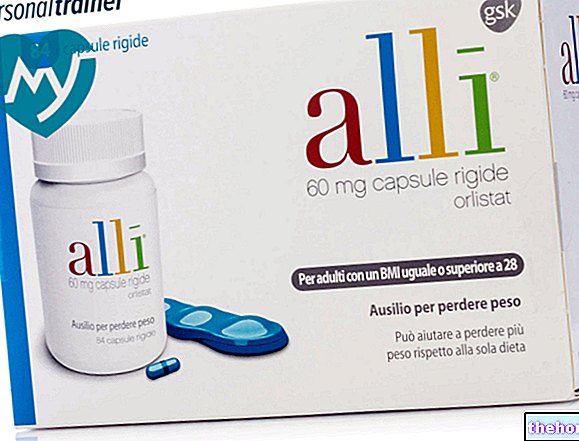Active ingredients: Flunarizine
FLUXARTEN 5 mg hard capsules
FLUXARTEN 10 mg hard capsules
Indications Why is Fluxarten used? What is it for?
PHARMACOTHERAPEUTIC CATEGORY
Anti-vertigo preparations
THERAPEUTIC INDICATIONS
Prophylactic treatment of migraine with frequent and severe attacks, limited to patients who have not responded to other therapies or in whom these therapies have caused serious undesirable effects.
Contraindications When Fluxarten should not be used
Flunarizine is contraindicated in patients with:
- known hypersensitivity to flunarizine or to any of the excipients contained in the composition
- current depressive illness or history of recurrent depression
- pre-existing symptoms of Parkinson's disease or other extrapyramidal disorders
Precautions for use What you need to know before taking Fluxarten
Extrapyramidal and depressive symptoms, parkinsonism
Flunarizine can cause extrapyramidal and depressive symptoms and highlight parkinsonism, especially in elderly patients. Therefore it should be used with caution in such patients. The recommended doses should not be exceeded. Patients should be observed at regular intervals, especially during maintenance therapy, so that extrapyramidal or depressive symptoms can be detected early and, if present, treatment can be stopped.
Fatigue
In rare cases, fatigue may progressively increase during flunarizine therapy. In these cases, therapy should be discontinued (see Undesirable Effects).
Interactions Which drugs or foods can modify the effect of Fluxarten
Tell your doctor or pharmacist if you have recently taken any other medicines, even those without a prescription.
Alcohol, hypnotics or tranquilizers
Concomitant intake of flunarizine with alcohol, hypnotics or tranquilizers can cause excessive sedation.
Topiramate
The pharmacokinetics of flunarizine are not affected by topiramate. Following repeated doses to migraine patients, the systemic exposure to flunarizine was increased by 14%. When flunarizine was administered concomitantly with topiramate 50 mg every 12 hours, administration of repeated doses resulted in a 16% increase. in systemic exposure to flunarizine The steady-state pharmacokinetics of topiramate are not affected by flunarizine.
Other anti-epileptic drugs
Chronic administration of flunarizine does not affect the availability of phenytoin, carbamazepine, valproate or phenobarbital. Plasma concentrations of flunarizine were generally lower in patients with epilepsy taking these anti-epileptic drugs compared to healthy subjects given similar doses. Plasma protein binding of carbamazepine, valproate or phenytoin is not affected by concomitant administration of flunarizine.
Warnings It is important to know that:
Fertility
No data are available.
Pregnancy
Ask your doctor or pharmacist for advice before taking any medicine. As a precautionary measure, it is preferable to avoid using flunarizine during pregnancy. There are no data on the use of flunarizine in pregnant women. Animal studies do not indicate direct or indirect harmful effects with respect to pregnancy, embryonal / fetal development, parturition or postnatal development.
Feeding time
A decision to discontinue breast-feeding or to continue / discontinue flunarizine therapy must be made taking into account the benefit of breast-feeding for the child and the benefit of therapy for the woman. It is not known whether flunarizine is excreted in human milk. Animal studies have shown excretion of flunarizine in breast milk.
Effects on ability to drive and use machines
Since somnolence may occur, especially at the start of treatment, caution should be exercised during activities such as driving vehicles or operating hazardous machinery.
Important information about some of the ingredients
Lactose
Flunarizine capsules contain lactose. Patients with rare hereditary problems of galactose intolerance, lactase deficiency or glucose-galactose malabsorption should not take this medicine.
Carmoisine (azorubine)
The medicine contains carmoisine (azorubine) which can cause allergic reactions.
Dosage and method of use How to use Fluxarten: Dosage
Adults
Acute treatment
In patients less than 65 years of age, treatment should be started at a dose of 10 mg per day (to be taken in the evening).
If depression, extrapyramidal signs or other unacceptable adverse events occur during treatment, the treatment should be discontinued.
If no significant improvement is observed after two months, the patient should be considered refractory to therapy and drug administration discontinued.
Maintenance therapy
If the patient responds satisfactorily and if maintenance therapy is required, the same daily dose should be used, but in this case the administration should be interrupted for two consecutive days per week (drug-free days), e.g. Saturday and Sunday. Even if prophylactic treatment is effective and well tolerated, it must be stopped after six months and can only be resumed in case of relapse.
Senior citizens
In patients over 65 years of age, treatment should be started at a dose of 5 mg per day (to be taken in the evening).
Flunarizine should be used with caution in elderly patients (see Precautions for use).
Children
It is not recommended for use in children and infants.
Kidney failure
No data are available.
Hepatic insufficiency
No data are available.
Overdose What to do if you have taken too much Fluxarten
In case of accidental intake of an excessive dose of FLUXARTEN, notify your doctor immediately or go to the nearest hospital.
Symptoms and signs
Acute overdose (up to 600 mg in one intake) has been reported and symptoms observed were sedation, agitation and tachycardia.
Treatment
Treatment of acute overdose consists of administration of activated charcoal, induction of vomiting or gastric lavage, and supportive measures. No specific antidote is known.
IF IN ANY DOUBT ABOUT USING FLUXARTEN, CONTACT YOUR DOCTOR OR PHARMACIST.
Side Effects What are the side effects of Fluxarten
Like all medicines, FLUXARTEN can cause side effects, although not everybody gets them.
Clinical trial data and post-marketing data
The safety of flunarizine was evaluated in 247 flunarizine-treated subjects who participated in two placebo-controlled clinical trials in the treatment of dizziness and migraine, respectively, and in 476 flunarizine-treated subjects who participated in two controlled clinical trials with comparator in the treatment of dizziness and / or migraine. Based on the pooled safety data from these clinical studies, the most commonly reported undesirable effects (incidence ≥4%) were (% incidence): weight gain (11% ), sleepiness (9%), depression (5%), increased appetite (4%), and rhinitis (4%). The following undesirable effects, including those mentioned above, have been reported with the use of flunarizine in both clinical trials and post-marketing.
Side effects are listed by frequency using the following convention:
Very common ≥1 / 10
Common ≥1 / 100 y
Uncommon ≥1 / 1000 to
Rare ≥1 / 10,000 y
Very rare
Not known (frequency cannot be estimated from the available data)
Infections and infestations
Common: rhinitis
Metabolism and nutrition disorders
Common: increased appetite
Psychiatric disorders
Common: depression, insomnia
Uncommon: depressive symptoms (see Precautions for use) sleep disturbances, anxiety, apathy
Nervous system disorders
Common: somnolence
Uncommon: coordination abnormalities, disorientation, lethargy, paraesthesia, restlessness, lack of energy, tinnitus, stiff neck
Not known: akathisia, bradykinesia, cogwheel sign, dyskinesia, essential tremor, extrapyramidal disorder, parkinsonism, sedation, tremor (see Precautions for use)
Cardiac pathologies
Uncommon: palpitations
Vascular pathologies
Uncommon: hypotension
Gastrointestinal disorders
Common: constipation, stomach upset, nausea
Uncommon: intestinal obstruction, dry mouth, gastrointestinal disturbances
Hepatobiliary disorders
Not known: increased hepatic transaminases
Skin and subcutaneous tissue disorders
Uncommon: hyperhidrosis
Not known: erythema
Musculoskeletal and connective tissue disorders
Common: myalgia
Uncommon: muscle spasms, muscle contractions
Not known: muscle stiffness
Diseases of the reproductive system and breast
Common: menstrual irregularities, breast pain
Uncommon: menorrhagia, menstrual disturbances, oligomenorrhea, breast hypertrophy, decreased libido
Not known: galactorrhea
General disorders and administration site conditions
Common: fatigue (see Precautions for use)
Uncommon: generalized edema, peripheral edema, asthenia
Diagnostic tests
Very common: weight gain Compliance with the instructions contained in the package leaflet reduces the risk of side effects.
Reporting of side effects
If you get any side effects, talk to your doctor or pharmacist. This includes any possible side effects not listed in this leaflet. Side effects can also be reported directly via the national reporting system at www.agenziafarmaco.gov.it/it/responsabili. By reporting side effects you can help provide more information on the safety of this medicine.
Expiry and Retention
Expiry: see the expiry date printed on the package.
The expiry date shown on the package refers to the product in intact packaging, correctly stored.
Warning: do not use the medicine after the expiry date shown on the package
Keep this medicine out of the sight and reach of children.
Medicines should not be disposed of via wastewater or household waste. Ask your pharmacist how to throw away medicines you no longer use. This will help protect the environment.
Composition and pharmaceutical form
COMPOSITION
FLUXARTEN 5 mg hard capsules
Each capsule contains:
Active principle:
flunarizine hydrochloride 5.9 mg (equivalent to 5 mg of flunarizine base).
Excipients: lactose, corn starch, talc, magnesium stearate, colloidal silica, azorubine (E122), red iron oxide (E172), black iron oxide (E172), titanium dioxide (E171), gelatin.
FLUXARTEN 10 mg hard capsules
Each capsule contains:
Active ingredient: flunarizine hydrochloride 11.8 mg (equivalent to 10 mg of flunarizine base).
Excipients: lactose, corn starch, talc, magnesium stearate, colloidal silica, azorubine (E122), indigo carmine (E132), red iron oxide (E172), black iron oxide (E172), titanium dioxide (E171), gelatin.
PHARMACEUTICAL FORM AND CONTENT
Hard capsules
Packaging:
50 hard capsules of 5 mg
50 hard capsules of 10 mg
Source Package Leaflet: AIFA (Italian Medicines Agency). Content published in January 2016. The information present may not be up-to-date.
To have access to the most up-to-date version, it is advisable to access the AIFA (Italian Medicines Agency) website. Disclaimer and useful information.
01.0 NAME OF THE MEDICINAL PRODUCT
FLUXARTEN HARD CAPSULES
02.0 QUALITATIVE AND QUANTITATIVE COMPOSITION
Fluxarten 5 mg hard capsules
Each capsule contains 5.9 mg of flunarizine hydrochloride (equivalent to 5 mg of flunarizine base).
Fluxarten 10 mg hard capsules
Each capsule contains 11.8 mg of flunarizine hydrochloride (equivalent to 10 mg of flunarizine base).
For the full list of excipients, see section 6.1.
03.0 PHARMACEUTICAL FORM
Hard capsules
04.0 CLINICAL INFORMATION
04.1 Therapeutic indications
Prophylactic treatment of migraine with frequent and severe attacks, limited to patients who have not responded to other therapies or in whom these therapies have caused serious undesirable effects.
04.2 Posology and method of administration
Adults
Acute treatment
In patients less than 65 years of age, treatment should be started at a dose of 10 mg per day (to be taken in the evening).
If depression, extrapyramidal signs or other unacceptable adverse events occur during treatment, the treatment should be discontinued.
If no significant improvement is observed after two months, the patient should be considered refractory to therapy and drug administration discontinued.
Maintenance therapy
If the patient responds satisfactorily and if maintenance therapy is required, the same daily dose should be used, but in this case the administration should be interrupted for two consecutive days per week (drug-free days), e.g. Saturday and Sunday.
Even if prophylactic treatment is effective and well tolerated, it must be stopped after six months and can only be resumed in case of relapse.
Senior citizens
In patients over 65 years of age, treatment should be started at a dose of 5 mg per day (to be taken in the evening).
Flunarizine should be used with caution in elderly patients (see section 4.4).
Children
It is not recommended for use in children and infants.
Kidney failure
No data are available.
Hepatic insufficiency
No data are available.
04.3 Contraindications
Flunarizine is contraindicated in patients with:
• known hypersensitivity to flunarizine or to any of the excipients listed in section 6.1.
• current depressive illness or history of recurrent depression (see sections 4.4 and 4.8)
• pre-existing symptoms of Parkinson's disease or other extrapyramidal disorders (see sections 4.4 and 4.8)
04.4 Special warnings and appropriate precautions for use
Extrapyramidal and depressive symptoms, parkinsonism
Flunarizine can cause extrapyramidal and depressive symptoms and highlight parkinsonism, especially in elderly patients. Therefore it should be used with caution in such patients.
The recommended doses should not be exceeded. Patients should be observed at regular intervals, especially during maintenance therapy, so that extrapyramidal or depressive symptoms can be detected early and, if present, treatment can be stopped (see sections 4.3 and 4.8).
Fatigue
In rare cases, fatigue may progressively increase during flunarizine therapy. In such cases, therapy should be discontinued (see section 4.8).
Important information about some of the ingredients
Lactose
Flunarizine capsules contain lactose. Patients with rare hereditary problems of galactose intolerance, lactase deficiency or glucose-galactose malabsorption should not take this medicine.
Carmoisine (azorubine)
The medicine contains carmoisine (azorubine) which can cause allergic reactions.
04.5 Interactions with other medicinal products and other forms of interaction
Alcohol, hypnotics or tranquilizers
Concomitant intake of flunarizine with alcohol, hypnotics or tranquilizers can cause excessive sedation.
Topiramate
The pharmacokinetics of flunarizine are not affected by topiramate. Following repeated doses to migraine patients, the systemic exposure to flunarizine was increased by 14%. When flunarizine was administered concomitantly with topiramate 50 mg every 12 hours, administration of repeated doses resulted in a 16% increase. in systemic exposure to flunarizine.Steady state pharmacokinetics of topiramate are not affected by flunarizine.
Other anti-epileptic drugs
Chronic administration of flunarizine does not affect the availability of phenytoin, carbamazepine, valproate or phenobarbital. Plasma concentrations of flunarizine were generally lower in patients with epilepsy taking these anti-epileptic drugs compared to healthy subjects given similar doses. The plasma protein binding of carbamazepine, valproate and phenytoin is not affected by concomitant administration of flunarizine.
04.6 Pregnancy and lactation
Fertility
No data are available.
Pregnancy
As a precautionary measure, it is preferable to avoid using flunarizine during pregnancy. There are no data on the use of flunarizine in pregnant women. Animal studies do not indicate direct or indirect harmful effects with respect to pregnancy, embryonal / fetal development, parturition or postnatal development.
Feeding time
A decision to discontinue breast-feeding or to continue / discontinue flunarizine therapy must be made taking into account the benefit of breast-feeding for the child and the benefit of therapy for the woman.
It is not known whether flunarizine is excreted in human milk. Animal studies have shown excretion of flunarizine in breast milk.
04.7 Effects on ability to drive and use machines
As somnolence may occur, especially at the initiation of treatment, caution should be exercised during activities such as driving vehicles or operating hazardous machinery (see section 4.8).
04.8 Undesirable effects
Clinical trial data and post-marketing data
The safety of flunarizine was evaluated in 247 flunarizine-treated subjects who participated in two placebo-controlled clinical trials in the treatment of dizziness and migraine, respectively, and in 476 flunarizine-treated subjects who participated in two controlled clinical trials with comparator in the treatment of dizziness and / or migraine. Based on the pooled safety data from these clinical trials, the most commonly reported undesirable effects (incidence ≥ 4%) were (% incidence): weight gain (11% ), sleepiness (9%), depression (5%), increased appetite (4%), and rhinitis (4%).
The following undesirable effects, including those mentioned above, have been reported with the use of flunarizine in both clinical trials and post-marketing.
Side effects are listed by frequency using the following convention:
Very common ≥ 1/10
Common ≥ 1/100 to
Uncommon ≥ 1/1000 to
Rare ≥ 1/10000 y
Very rare
Not known (frequency cannot be estimated from the available data)
Infections and infestations
common: rhinitis
Metabolism and nutrition disorders
common: increased appetite
Psychiatric disorders
common: depression, insomnia
Uncommon: depressive symptoms (see sections 4.3 and 4.4) sleep disturbances, anxiety, apathy
Nervous system disorders
common: drowsiness (see section 4.7)
Uncommon: coordination abnormalities, disorientation, lethargy, paraesthesia, restlessness, lack of energy, tinnitus, stiff neck
Not known: akathisia, bradykinesia, cogwheel sign, dyskinesia, essential tremor, extrapyramidal disorders, parkinsonism, sedation, tremor (see sections 4.3 and 4.4)
Cardiac pathologies
Uncommon: palpitations
Vascular pathologies
Uncommon: hypotension
Gastrointestinal disorders
common: constipation, stomach upset, nausea
Uncommon: intestinal obstruction, dry mouth, gastrointestinal disturbances
Hepatobiliary disorders
Not known: increased liver transaminases
Skin and subcutaneous tissue disorders
Uncommon: hyperhidrosis
Not known: erythema
Musculoskeletal and connective tissue disorders
common: myalgia
Uncommon: muscle spasms, muscle contractions
Not known: muscle stiffness
Diseases of the reproductive system and breast
common: menstrual irregularities, breast pain
Uncommon: menorrhagia, menstrual disorders, oligomenorrhea, breast hypertrophy, decreased libido
Not known: galactorrhea
General disorders and administration site conditions
common: fatigue (see section 4.4 Special warnings and precautions for use)
Uncommon: generalized edema, peripheral edema, asthenia
Diagnostic tests
Very common: weight gain
Reporting of suspected adverse reactions
Reporting of suspected adverse reactions occurring after authorization of the medicinal product is important as it allows continuous monitoring of the benefit / risk balance of the medicinal product. Healthcare professionals are asked to report any suspected adverse reactions via the national reporting system. "address www.agenziafarmaco.gov.it/it/responsabili.
04.9 Overdose
Symptoms and signs
Acute overdose (up to 600 mg in one intake) has been reported and symptoms observed were sedation, agitation and tachycardia.
Treatment
Treatment of acute overdose consists of administration of activated charcoal, induction of vomiting or gastric lavage, and supportive measures. No specific antidote is known.
05.0 PHARMACOLOGICAL PROPERTIES
05.1 Pharmacodynamic properties
Pharmacotherapeutic group: anti-vertigo preparations, ATC code: N07CA03
Mechanism of action and pharmacodynamic effects
Flunarizine is a bifluorinated derivative of cinnarizine with antihistamine and CNS depressant properties.
Flunarizine is a WHO class IV calcium channel blocker. It has no effect on contractility and cardiac conduction.
Flunarizine also possesses a "neuroleptic type action which could be the cause of certain side effects on the central nervous system.
05.2 Pharmacokinetic properties
Absorption
In healthy volunteers, following a single oral dose of flunarizine, peak plasma is reached after 2-4 hours. During chronic treatment, for administration of a daily dose of 10 mg, plasma concentrations gradually increase until the steady state concentration is reached around the 5th-6th week of drug intake. At steady-state, plasma levels remain nearly constant in a range between 39 and 115 ng / ml.
Distribution
The pharmacokinetic parameters of flunarizine are characterized by a large volume of distribution (apparent volume of distribution = 43.2 l / kg) in healthy volunteers and by a high tissue distribution. The results of animal experiments show that drug concentrations in various tissues they are much higher than the corresponding plasma levels, particularly in adipose tissue and skeletal muscles.
About 0.8% of flunarizine is present in free plasma, as it binds 90% to plasma proteins and 9% to erythrocytes.
Metabolism
Flunarizine is extensively metabolised in the liver (N-oxidative hydrodealkylation, aromatic hydroxylation and glucuronidation).
Elimination
Only a negligible amount of the drug is excreted unchanged in the urine.
Flunarizine and its metabolites are excreted with the faeces via the bile. In "humans," the mean terminal elimination half-life is approximately 18 days.
Clinical studies
They are not relevant to this medicine.
05.3 Preclinical safety data
For acute administration
LD50 Topo Swiss, per os: 815 mg / kg
LD50 Topo Swiss, intra peritoneal: 174 mg / kg
DL50 Ratto S.D. per os: 312 mg / kg
DL50 Ratto S.D. intra peritoneal: 353 mg / kg
For prolonged administration
S.D. rat, per os (18 months) weight decrease to 80 mg / kg / day
Beagle dog, per os (12 months) no alteration at 20 mg / kg / day
Fetal toxicity
Absent (Ratte S.D., rabbits N.Z.)
Flunarizine has no chemical analogy with compounds recognized as carcinogens and cocarcinogens. In the long-term studies (rat and dog) there were no histological manifestations or any suspected biochemical activities.
06.0 PHARMACEUTICAL INFORMATION
06.1 Excipients
Fluxarten 10 mg hard capsules: lactose, corn starch, talc, magnesium stearate, colloidal silica, azorubine (E122), indigo carmine (E132), red iron oxide (E172), black iron oxide (E172), titanium dioxide (E171), gelatin.
Fluxarten 5 mg hard capsules: lactose, corn starch, talc, magnesium stearate, colloidal silica, azorubine (E122), red iron oxide (E172), black iron oxide (E172), titanium dioxide (E171), gelatin
06.2 Incompatibility
No relevant data are available.
06.3 Period of validity
5 years
06.4 Special precautions for storage
Do not store above 30 °
06.5 Nature of the immediate packaging and contents of the package
Blister in opaque material
Fluxarten 10 mg hard capsules
50 hard capsules
Fluxarten 5 mg hard capsules
50 hard capsules
06.6 Instructions for use and handling
No special instructions
07.0 MARKETING AUTHORIZATION HOLDER
GlaxoSmithkline S.p.A.
Via A. Fleming, 2 - Verona
08.0 MARKETING AUTHORIZATION NUMBER
Fluxarten 10 mg hard capsules - 50 hard capsules - A.I.C. n. 024410021
Fluxarten 5 mg hard capsules - 50 hard capsules - A.I.C. n. 024410045
09.0 DATE OF FIRST AUTHORIZATION OR RENEWAL OF THE AUTHORIZATION
01.06.81/01.06.2010
10.0 DATE OF REVISION OF THE TEXT
10/2015




























